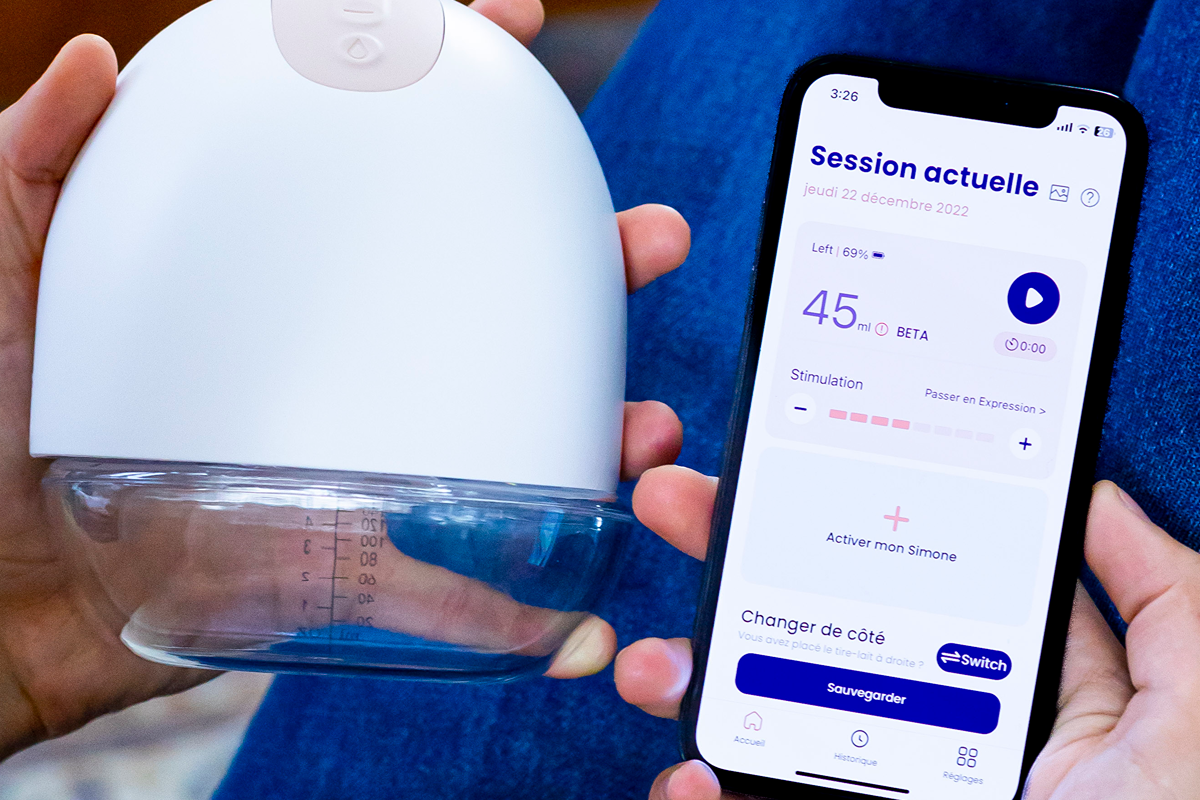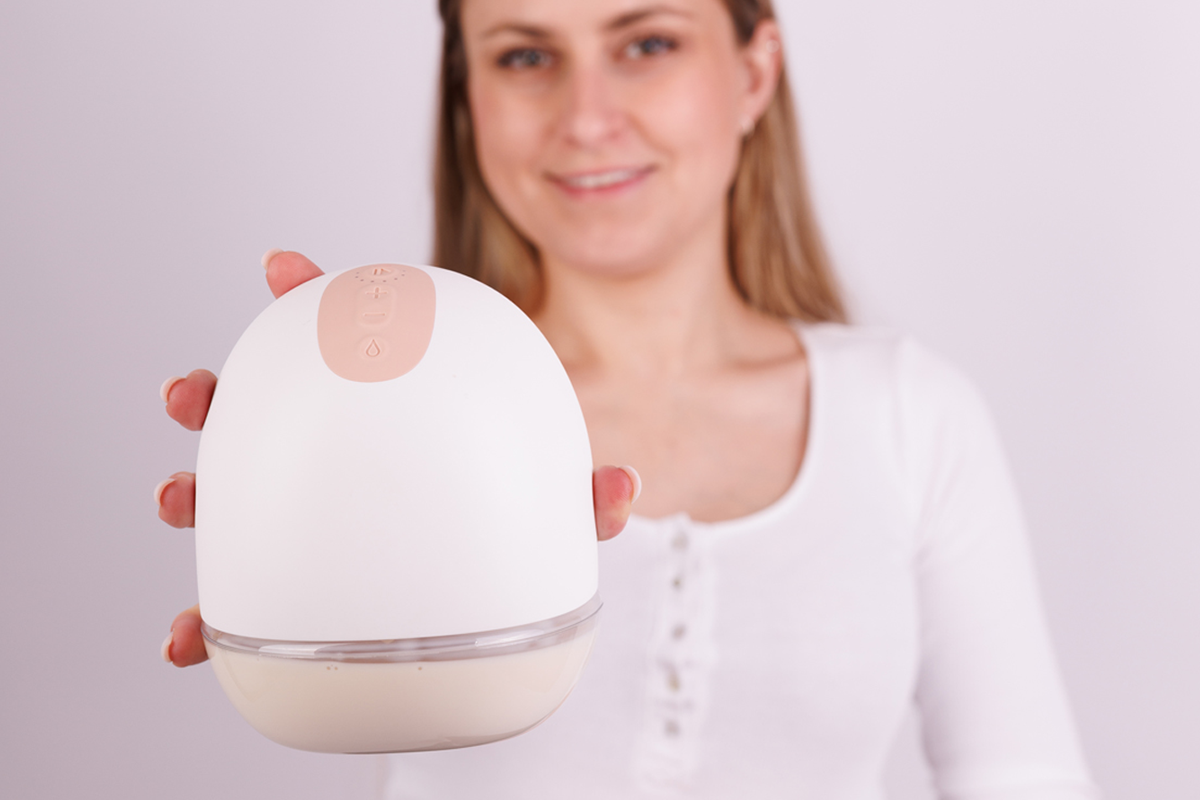Breast pumps are a vital tool for many moms, whether you're returning to work, building a freezer stash, or navigating challenges like low milk supply. Understanding the difference between expression and stimulation mode is essential for maximizing your pumping sessions and supporting your breastfeeding journey. In this article, we demystify these two crucial breast pump modes, explain why both are important, and offer practical tips to help you get the most out of every session.
Demystifying expression and stimulation mode
Breast pump expression mode
💡 Expression mode is designed to mimic the deep, slow sucking of a baby after let-down has occurred.
This mode uses slower cycles and stronger suction to efficiently extract milk once your milk is flowing. Switching to expression mode at the right time helps you maximize the amount of milk you pump and ensures effective breast emptying, which is key for maintaining your milk supply.
Breast pump stimulation mode
💡 Stimulation mode (sometimes called massage or let-down mode) is used at the start of your session.
It mimics the quick, light sucking a baby uses to trigger the let-down reflex, using faster cycles and gentler suction.This mode helps release oxytocin, the hormone responsible for milk ejection, making it easier to start milk flow—especially if you’re pumping but no milk is coming out at first.
Why does a breast pump have two modes?
Modern breast pumps offer both stimulation and expression modes to closely replicate a baby’s natural nursing pattern. Starting with stimulation mode helps activate your let-down reflex, while switching to expression mode allows for efficient milk removal. This two-step process is crucial for effective pumping, especially when establishing your breast milk pumping schedule or if you’re working to increase breast milk supply.
Expression vs. stimulation mode: A head-to-head comparison
Key differences at a glance
| Feature | Stimulation Mode (Let-Down/Massage) |
Expression Mode |
|---|---|---|
| Primary Purpose | Trigger let-down reflex | Extract milk after let-down |
| Cycle Speed | Fast | Slow |
| Suction Strength | Gentle | Stronger |
| When to Use | At the start of pumping | Once milk begins to flow |
| Sensation | Light, fluttery | Deep, rhythmic |
| Duration | 1–2 minutes or until milk flows | Remainder of session |
| Impact on Supply | Stimulates oxytocin, encourages let-down | Maximizes milk removal |
Interplay and relationship
Stimulation and expression modes work together to mimic how a baby nurses at the breast.
💡 The stimulation phase preps your body, while the expression phase ensures you get the most milk out.
Switching between these modes as needed can help address common issues like pumping but no milk, and support your efforts to increase breast milk supply. For moms using wearable pumps, understanding how to use a wearable breast pump and when to switch modes is especially important for comfort and efficiency.
How expression and stimulation modes work on the Perifit Pump
When used with the application, our Perifit Pump offers three distinct programs tailored to meet different pumping needs: Classic, Power Pumping, and Mix-mode. Programs affect the timing of your session and the mode (stimulation/expression) but are independent of the cycle speed you choose. Any program can be used in combination with any cycle speed.
Classic Program (30 Minutes)
Best for standard, single letdown pumping sessions.
This program is our default setting for each session unless another program is selected. It starts with a brief stimulation phase followed by a continuous expression phase.
- Stimulation Mode (2 minutes): The pump begins with a 2-minute stimulation phase, indicated by a white blinking LED. This phase helps to initiate milk flow.
- Expression Mode (28 minutes): After stimulation, the pump switches to a 28-minute expression phase, marked by a solid white LED. This phase maintains consistent milk extraction.
- Stop: The session ends after a total of 30 minutes.
Mix-mode Program (30 Minutes)
Ideal if your breasts are not empty at the end of a classic session
This program alternates between stimulation and expression phases to repeatedly stimulate the milk ejection reflex.
Alternating phases: Mix-mode switches back and forth between stimulation and expression modes to stimulate the milk ejection reflex repeatedly.
-
- Stimulation Mode (2 minutes): The pump begins with a 2-minute stimulation phase, indicated by a white blinking LED. This phase helps to initiate milk flow.
- Expression Mode (5 minutes): After stimulation, the pump switches to a 5-minute expression phase, marked by a solid white LED. This phase maintains consistent milk extraction.
-
- Stimulation Mode (2 minutes): The pump begins with a 2-minute stimulation phase, indicated by a white blinking LED. This phase helps to initiate milk flow.
- Expression Mode (7 minutes): After stimulation, the pump switches to a 7-minute expression phase, marked by a solid white LED. This phase maintains consistent milk extraction.
Stop: The entire session lasts 30 minutes.
Can using the wrong mode affect milk supply?
Using the incorrect mode at the wrong time can impact both how much milk you express and your overall milk supply. Staying too long in stimulation mode may limit milk removal, while switching to expression mode before let-down can be uncomfortable and ineffective. It’s important to pay attention to your body’s signals and adjust modes accordingly.
Mastering the difference between expression and stimulation mode is essential for making your breast pump work for you. By understanding when and how to use each mode, you can closely mimic your baby’s natural nursing rhythm, encourage let-down, and maximize milk removal. This not only helps protect and increase your milk supply but also makes pumping more efficient and comfortable. Using your breast pump’s modes effectively is a key part of your breastfeeding journey. With the right knowledge and approach, you’ll feel empowered to meet your feeding goals and support your baby’s needs.
Sources:




